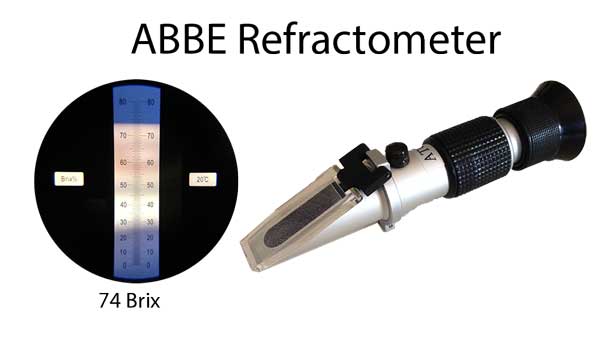| g e n u i n e i d e a s | ||||||
 |
 |
 |
 |
 |
 |
 |
| home | art and science |
writings | biography | food | inventions | search |
| glycerin humidity sensor |
|
Dec 2014 Accurate humidity control over your smoker is one key to barbecue success. Humidity directly affects the tenderness, cooking time, yield and smokiness of the food. It also matters when baking bread or a sheet cake. But accurate humidity measurements inside a smoker remain problematical. Electronic thin film sensors, which are both sensitive and convenient, rely on capacitive or ionic electrical changes induced in the film by the absorbed water vapor. They are excellent choices for monitoring humidity in a HVAC system. But smoke also contains tars and acids and other chemicals which can interfere with thin film water (hydrogen ion) conduction, or even destroy the sensor. While the sensor can be protected with a HEPA filter sleeve, or heated to burn off contamination, eventually the sensor will fail. Also, few inexpensive solid state sensors will tolerate smoker temperatures much above 225F. A simple aspirated psychrometer is also unreliable. For example, a classic wet/dry thermometer requires at least 5 mph airflow to fully cool the wet thermometer by evaporation. Unfortunately, the evaporation rate is dramatically reduced by any thin oil films deposited from the smoke on the wet bulb mantle, and while I've fabricated a number of psychrometers fanned by external blowers or peristalic pumps, they are too inaccurate for use in a smoker. Ok in a kitchen oven. Instead, we measure relative humidity by the percentage of water absorbed in glycerin. Glycerin is hygroscopic and has a low evaporation rate at high temperatures (e.g. a vapor pressure of less than 1mm at 250F, compared to atmospheric pressure of 760 mm). So it remains stable during measurement. The greater the relative humidity, the higher the water absorbtion, and the lower the specific gravity and index of refraction. An optical refractometer (typically used in brewing to measure alcohol or sugar content and costing under $50) detects the index or specific gravity.
The downside of this technique is speed. Even a thin layer of glycerin might take a half hour to come into equalibrium with the smoker (though a bit of gentle agitation with a toothpick helps). To measure RH, a few drop of glycerin are placed on a glass microscope slide- prefereably a slide with a shallow depression. After a half hour, the slide is removed from the smoker and the hot glycerin spread on a BRIX Abbe refractometer. This device measures the index of refraction of the glycerine/water mixture, which can then be related to the specific gravity, and thus to the RH. It takes about 30 seconds for the glycerin to cool down to room temperature for an accurate reading. Fortunately, thirty seconds is far too rapid for water to evaporate from the glycerin drop. I've created a simple conversion between the BRIX reading and RH (see calculator below). Seek out pure food grade glycerin, and make sure your refractometer is calibrated and covers the range from 50 to 80 °Brix.
|
|
-------------------------------------------------------------------------------------------------------- Additional articles on kitchen science can be found HERE. For this method to work properly, it is very important to accurately calibrate your BRIX refractometer. Calibration oils are available for around $20 a gram. But, if you simply heat a few drops of glycerin in a 250F kitchen oven for a few hours to drive off the water (a typical kitchen oven is under 1% RH), and set your refractometer to read 73.5 °Brix, you should be close. Natural products vary in their BRIX number, but canola oil will read around 72.5 °Brix and olive oil around 71 °Brix. The line of demarcation between the blue and white region in the refractomer eyepiece should be sharp. If the edge is blurred, the glycerin may not have uniformly covered the sample region, or may still be cooling down, or the water content may be inhomogeneous.
Data sources: My own curve fits to Literature summaries and USDA Sucrose Conversion Table. In light of all the approximations (especially temperature and wavelength), this calcualtor should be accurate to around 1 part in 20. |
 Contact Greg Blonder by email here - Modified Genuine Ideas, LLC. |
